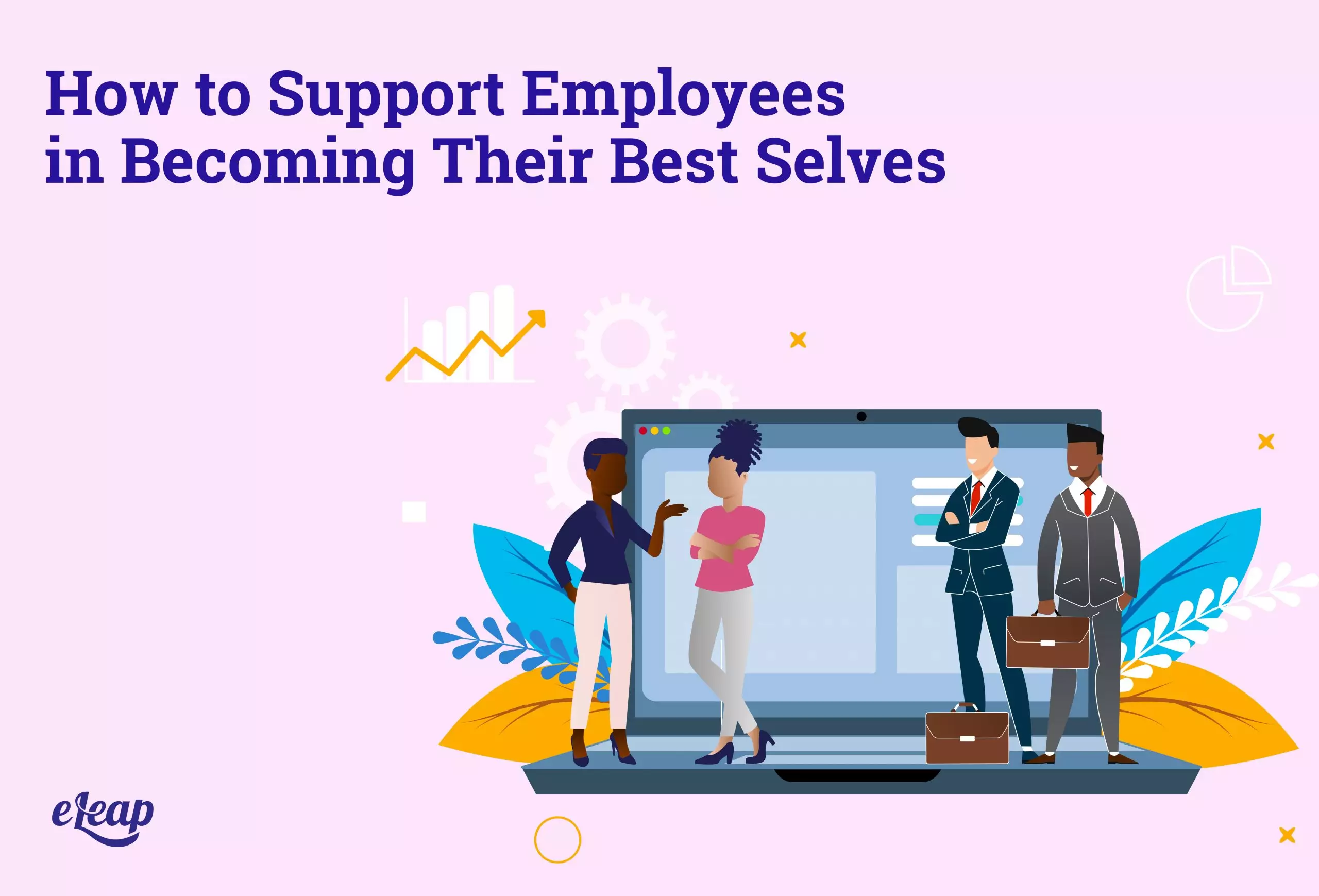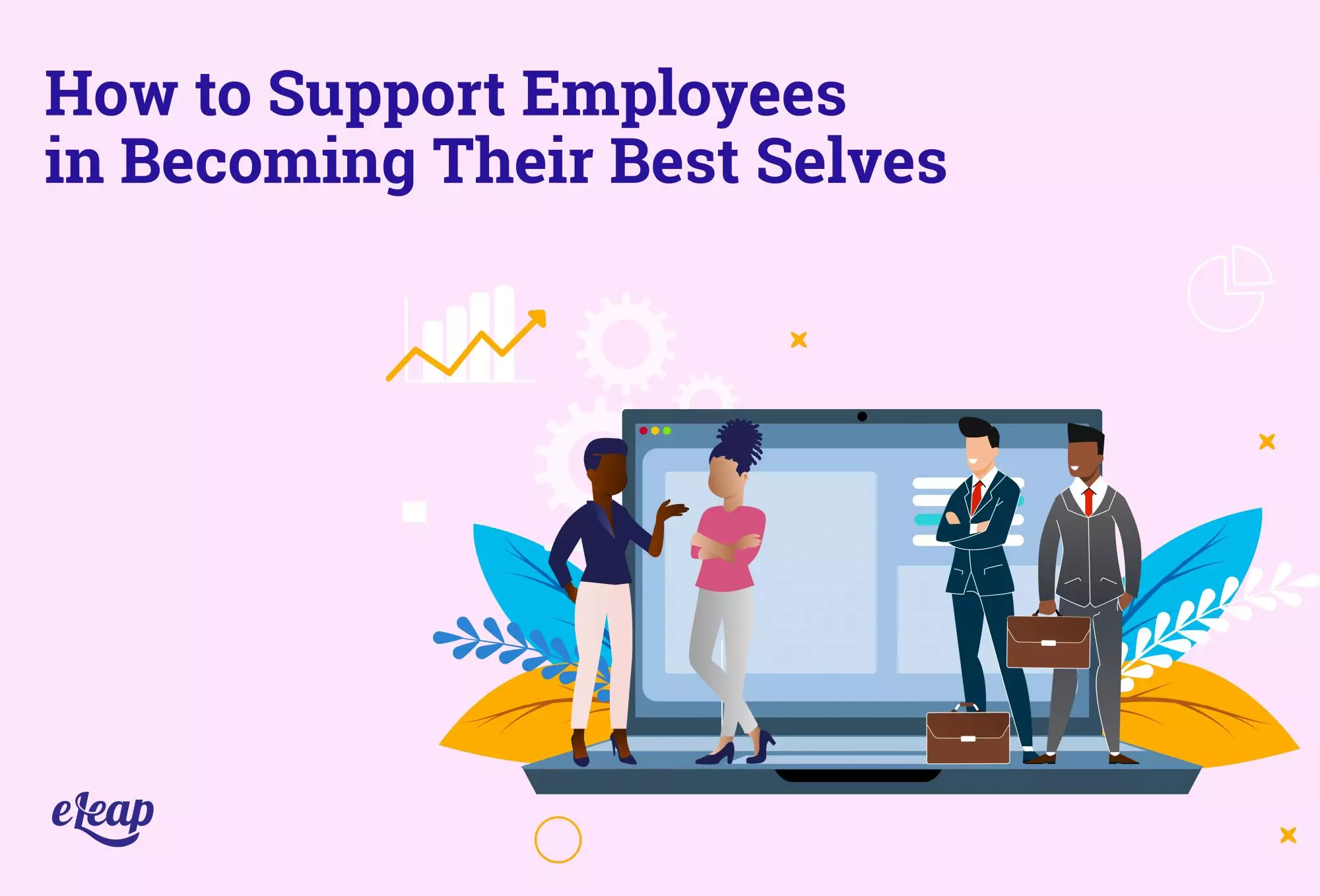How to Support Employees in Becoming Their Best Selves

Hiring and onboarding are costly, time-consuming processes. And, when employees jump ship in pursuit of better jobs, you’re forced to start all over again. What if there was a way to accelerate the onboarding process, improve your hiring practices, and even retain key talent for longer durations? There is, but it might not be what you think. It’s all about helping your employees become their best selves.

Why Should You Bother?
The conventional hiring process goes something like this:
- You post a job description for an opening.
- You accept resumes/CVs for a while.
- You interview people with an eye toward knowledge and competencies.
- You hire someone and onboard them.
There’s not usually much beyond that, and this is a critical mistake. You take your hands off the wheel at a critical juncture and fail to guide employees forward. It’s about more than filling empty slots in your business or hiring someone with the bare minimum competencies.
You need to make smart, informed hiring decisions that propel your business forward. At the heart of your business, no matter what your industry might be, are your employees. Without the right team, your business will fail. It makes sense that you’d want the best employees possible. Achieving that requires you to support them in their quest to become their best selves.
The True Cost of Hiring: Understanding Employee Lifetime Value
Employee lifetime value, or ELV, is nothing more than the value an employee delivers to your organization after subtracting for the costs. However, it’s more than just reducing an employee to a mere number. It’s about digging deep and realizing just how much value your employees deliver.
In the beginning, ELV is negative. You’re spending money on the onboarding process and a new employee is not yet delivering any return. However, within a few weeks, their value skyrockets as they learn the ropes and come to grips with their position on the team. As they continue to train, their output keeps increasing.
That doesn’t go on forever, though. Eventually, an employee runs out of development options, and they plateau. Their contribution limit is reached and they remain at that level until they decide to leave, usually to pursue new opportunities for growth (not necessarily for better pay). However, what if there was a way to continually offer new opportunities to your existing employees?
Not only would that help keep their output increasing and their engagement high, but it would also delay or even prevent them from searching for other opportunities. With the right approach, you can increase the speed of onboarding and ramp-up, increase the successes to which they can aspire within the company, increase their output, and lengthen their stay with your company. Sounds like a win-win, doesn’t it?
The Role of L&D
While there are many moving parts to achieving this strategy, learning and development (L&D) is the foundation. It plays a critical role in ramping up the onboarding process and getting your new hires up to speed so that they’re able to contribute earlier. It also plays a pivotal role in offering ongoing opportunities to move up within the company.
With the right approach to L&D, you can achieve some pretty critical goals with a single tool. These include:
- Assessing individual aptitudes and abilities
- Assessing knowledge and interests
- Closing skills gaps and imparting the necessary knowledge
- Creating a career map based on identified strengths, interests, and capabilities
- Continually challenge employees to grow professionally and personally
- Improve employee engagement at all stages along their lifetime with your company
Of course, to do this successfully, you need buy-in not just from leadership, but from your employees. That means you need to know a bit more about intrinsic motivation. We’ll discuss that below.
Intrinsic Motivation: Ditching the Carrot and Stick
If you look at most business operations, you’ll find that they’re supported by something pretty archaic – the carrot and stick motivational method. That is, you dangle an ostensibly valuable reward in front of your employees in the hopes that it will spur them to move forward. Think of suspending a carrot in front of a donkey’s face. The donkey sees the carrot, wants the carrot, and walks forward in an attempt to get it.
However, the carrot doesn’t always work. Sometimes the donkey doesn’t want the carrot, no matter how tempting it might appear. That’s when you break out the stick. It’s used to punish the donkey and force it to move forward.
This, in a nutshell, is what business management has been for most of its history. It doesn’t take a rocket scientist to tell you this approach is broken. Most of us realize that, deep down.
Instead of extrinsic motivators like the carrot or the stick, we need to focus on intrinsic motivation. That is the motivation that comes from within the employee, not from an outside force. When you have the right intrinsic motivators in place, you’ll find that your employees are happy to improve themselves professionally and personally, and much more deeply engaged with L&D initiatives.
So, how do you develop intrinsic motivation? Many options exist, including:
- Make Training Voluntary: Often, employees balk at mandatory training. However, if you make it feel like a choice, they’re far more willing to move forward. Make sure your learning management system can support your L&D program and its goals.
- Offer Rewards That Matter: If you’re incentivizing training, you might need to rethink your incentives. Money is great, but more and more employees would prefer something with more value. You’ll need to think outside the box here.
- Create a Culture That Values Improvement: Another way to encourage employees to grow into their best selves is to make sure that your company culture values and promotes improvement and development. Celebrate it. Make it cool.
- Focus on Self-Development: For employees to become their best selves, you need to let them self-direct their efforts. You can provide a rough map, but don’t set hard compliance requirements or it will backfire.
While it will take time and effort, supporting your employees to become their best selves yields major benefits. It can be a game-changer, allowing you to create a more agile, competitive business, retain key talent, and more.